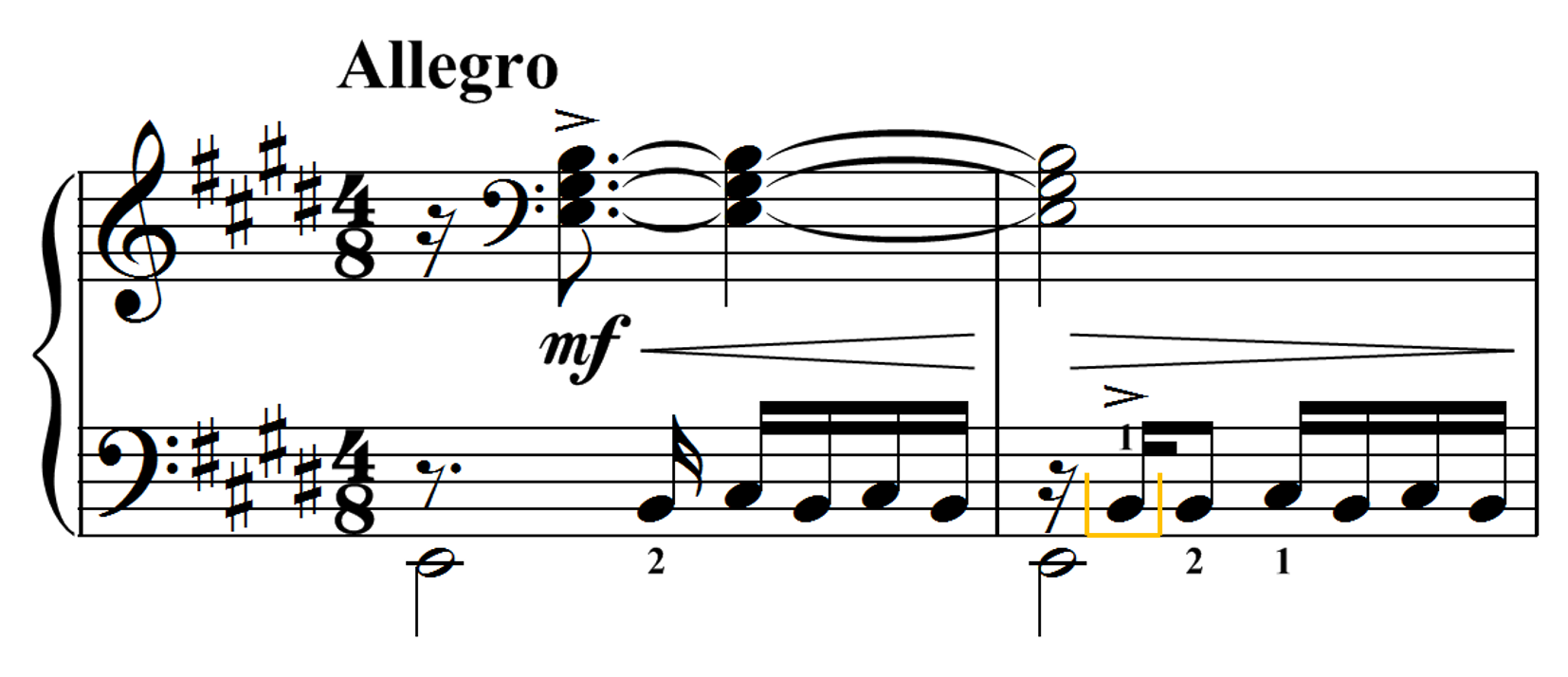“These redistributions help to clearly voice the melody and facilitate swift and smooth grace notes in m. 68.”
Submitted by Michael Clark
Published on 9/1/2023

“These redistributions help to clearly voice the melody and facilitate swift and smooth grace notes in m. 68.”
Submitted by Michael Clark
Published on 9/1/2023

“Playing this also line with the left hand requires less stretch.”
Submitted by Michael Clark
Published on 1/6/2024

“Taking the C in the right hand facilitates a smooth transition to the next downbeat.”
Submitted by Michael Clark
Published on 9/3/2023

“Dividing the run this way helps me stay organized rhythmically and highlight the changes in register.”
Submitted by Michael Clark
Published on 9/3/2023

“I begin with the left hand over the right hand but by m. 6 it is more comfortable to have the right hand over the left hand. Taking the lower B-flat into the left hand facilitates this switch.”
Submitted by Michael Clark
Published on 9/3/2023

“Taking the bottom notes of these chords into the left hand reduces the need to shift in both hands.”
Submitted by Michael Clark
Published on 9/3/2023

“Taking a few notes into the left hand helps my right hand maintain a more compact position for better voicing and facility in this difficult passage.”
Submitted by Michael Clark
Published on 9/2/2023

“Taking a few notes into the left hand helps my right hand maintain a more compact position for better voicing and facility in this difficult passage.”
Submitted by Michael Clark
Published on 9/2/2023

“Taking the As as part of the right-hand chord allows the left-hand to more vigorously rip the triplet.”
Submitted by Michael Clark
Published on 9/3/2023

“These redistributions are designed to facilitate improved voicing and legato in the melody line.”
Submitted by Michael Clark
Published on 9/3/2023

“I find it simpler to start this triplet line in the left hand, allowing the right hand to begin with finger 1 on the D-natural.”
Submitted by Michael Clark
Published on 9/3/2023

“The top note of the left-hand chord easily forms an octave with the right-hand line, more evenly dividing the notes between the hands.”
Submitted by Michael Clark
Published on 9/3/2023

“This distribution divides the notes more evenly between the hands, facility better voicing and legato in the top line.”
Submitted by Michael Clark
Published on 9/3/2023

“The accented B comes through more clearly when I play it with the right hand.”
Submitted by Michael Clark
Published on 10/4/2020

“The accents in m. 51 come through more clearly when divided between the hands. I prefer to maintain the octaves in the right hand in m. 56 for consistency and less shifting in the left hand.”
Submitted by Michael Clark
Published on 10/4/2020

“If the C-sharp and E are played with right hand 1 2, the right hand has to move rather awkwardly to the next chord. Taking the C-sharp in the left hand enables less shifting in the right hand while still allowing enough time for the left to arrive in its next position.”
Submitted by Michael Clark
Published on 4/20/2020

“Taking the Bs in the left hand eliminates uncomfortable stretches in the right hand while allowing the melody to remain legato.”
Submitted by Michael Clark
Published on 10/4/2020

“The alto notes can be taken into the left hand in m. 12 without much trouble, freeing the right hand from awkward stretches.”
Submitted by Michael Clark
Published on 10/4/2020